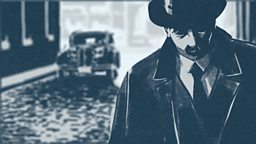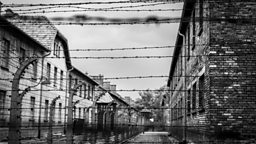How to be a Nazi hunter
After the Second World War, many members of the Nazi regime stood trial for their crimes, but some managed to escape justice and start new lives. With the outbreak of the Cold War, Nazi hunting slipped down the priority lists of Western governments and was largely left to individuals, with the being a famous example.
Of course, as time goes by, it becomes harder to find surviving perpetrators of Nazi crimes, and a Nazi hunter today doesn’t exactly have the same chance of tracking down a real life Nazi as Sam Donaldson did, when. But it’s still worth working out how major figures in the Third Reich fled after the war – what their networks were, who helped them. And it’s now a lot easier, thanks to the declassification of previously top secret documents and every amateur sleuth’s friend, the internet.

1. The CIA Electronic Reading Room
In 1998, the US Government passed the Nazi War Crimes Disclosure Act, a law that resulted in the identification and declassification of a vast number of previously inaccessible documents. The CIA went one step further and set up an ‘’ to make their files available online. Type a name in the box – see what happens. (You can also use the reading room to search for , if that’s your thing.)

2. The US National Archives
Unfortunately, the CIA wasn’t always the major player in the intelligence game that it is now. In the post-war years, it often played second fiddle to the US Army’s Counterintelligence Corps (CIC). As a result of the Nazi War Crimes Disclosure Act, CIC records have been declassified and near Washington, D.C. They’re not online, but they have been . Perhaps someone you’re interested in is listed and you were thinking of a trip to the States anyway. A bit expensive? You could get instead. Or you can ask for a .
3. The UK National Archives
The lack of a UK version of the Nazi War Crimes Disclosure Act means that the material in the isn’t helpfully gathered in one place, but the website has a good search function and some material is available online (for a small fee). The archives also contain the files of the (CSDIC), which which was set up to interview prisoners of war. These files can be a useful way of establishing what someone did during the war (and what British and American intelligence services knew about it).
As an aside, it’s worth noting that the lack of a UK Nazi War Crimes Disclosure Act also makes it difficult to know whether British intelligence agencies, like their American counterparts, employed former Nazis. It’s hard to believe that they didn’t.
4. German archives
Speak German? Terrific. If not, you should learn –. It also gives you access to a number of archives in Germany, Austria and elsewhere. Some – for example,the – can help you work out exactly what role the person you’re looking into played in the Nazi state. Others may provide clues on how they fled justice. As the path was often via northern Italy, you could try the l. Or you could look into the personal papers of Bishop Alois Hudal, a great friend to those on the run, at the .

5. Read around
There are a few professional historians who have worked in this area. A good overview of the subject is Gerald Steinacher’s Nazis on the Run (Oxford University Press). Or, if you’re particularly interested in the US government’s interaction with fleeing Nazis, you could try the essays collected in US Intelligence and the Nazis (Cambridge University Press). Of course, you should also listen to Philippe Sands tracking Otto Wächter in Intrigue: The Ratline.
6. Get started
While working on the case of Otto Wächter, we turned up a number of leads that we didn’t get the chance to investigate as thoroughly as we’d have liked. If something strikes you as you listen to The Ratline – a place, a name, an organisation, or anything else that you think could help us complete the picture – please do be in touch.
Please do email, me, James Everest with any exciting discoveries!
Intrigue: The Ratlines is available as a podcast. James Everest was the academic researcher.
-
![]()
Download Intrigue: The Ratline
A story of love, denial and a curious death presented by Philippe Sands.
-
![]()




